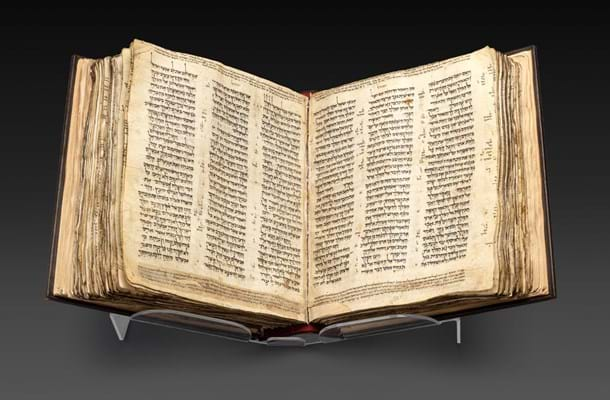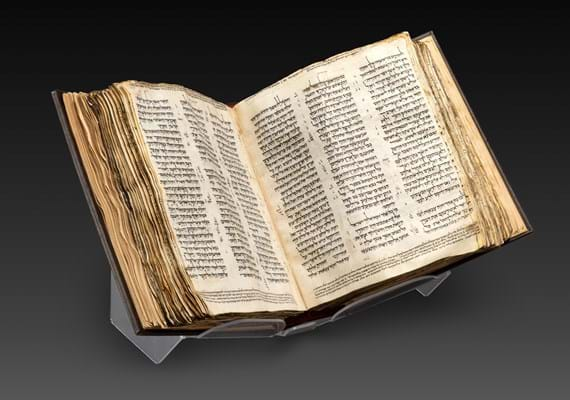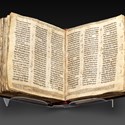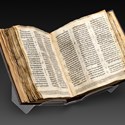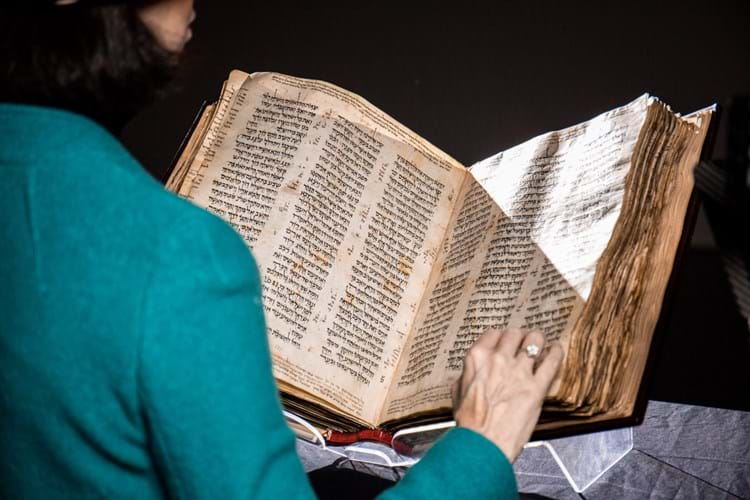
The Codex Sassoon set a record for any book sold at auction, surpassing the sum Bill Gates paid for Leonardo da Vinci's 'Codex Leicester' in 1994.
With buyer’s premium added, plus the additional 1% ‘overhead premium’ charged by Sotheby’s, the price was $38.1m (£30.3m).
The Codex Sassoon – named after its most prominent modern owner, David Solomon Sassoon (1880-1942) – came to auction from the collection of Jacqui Safra and was estimated at $30m-50m. It was offered with a third party guarantee meaning it was always bound to sell at the auction on May 17.
With bidding from two parties on the phone, it sold to Alfred H Moses, a former US ambassador and president of the American Jewish Committee, who is giving it to the ANU Museum of the Jewish People in Tel Aviv, Israel.
It was recently on public exhibition at the ANU, the world’s largest Jewish Museum, in March as part of Sotheby’s traveling exhibition ahead of the auction. Moses said: “In Israel at ANU, it will be preserved for generations to come as the centrepiece and gem of the entire and extensive display and presence of the Jewish story.”
Written on parchment in the area known as ‘Greater Syria’ the late 9th or early 10th century, Codex Sassoon contains all 24 books of the Hebrew Bible – missing only 12 leaves – and precedes the earliest entirely complete Hebrew Bible, the Leningrad Codex, by nearly a century.
With the 24 books divided into three parts – the Pentateuch, the Prophets and the Writings – the Hebrew Bible makes up the foundation for Judaism as well as the other Abrahamic faiths with the text forming the basis of what is known to Christians as the Old Testament.

The saleroom at Sotheby's New York was packed for the sale as two phone bidders competed for the lot.
Only one other full Hebrew Bible dating from this early period has survived: the Aleppo Codex which was produced in Tiberias in Israel in the 10th century. However, almost two-fifths of that book (approximately 200 folios) were lost under mysterious circumstances sometime between the late 1940s and the late 1950s.
Provenance
The Codex Sassoon was produced in ‘Greater Syria’ and remained privately owned by Jewish families until it passed into the keeping of a synagogue in northeastern Syria in the 13th century. When the synagogue was destroyed in the late 14th century the Bible was transferred to a private individual for safety but it then disappeared for the next five centuries. It re-emerged near Ankara in Turkey in 1929 when it was offered for sale to Sassoon, a scholar and collector who was in the process of assembling the most significant private collection of Judaica and Hebrew manuscripts of the 20th century. Sassoon bought it for £350
After the Sassoon family began selling parts of the collection through Sotheby’s in the 1970s, the Codex Sassoon sold at a Zurich auction in November 1978, fetching a hammer price of 550,000 Swiss francs (about $320,000/£160,350).
It later emerged in the possession of the British Rail Pension Fund, which had acquired three other manuscripts from the Sassoon sales as part of its art investment program, begun in 1974.
In December 1989, the British Rail Pension Fund auctioned the manuscript at Sotheby’s London, where it fetched £2.035m, a world record for a Hebrew manuscript at the time. The codex then entered the collection of Jacqui Safra from where it was consigned to the current sale.
Sotheby’s senior specialist for Judaica, Books & Manuscripts Sharon Liberman Mintz said: “For over a year, I have had the distinct pleasure of researching and studying this historical text, and I am absolutely delighted by today’s monumental result and that Codex Sassoon will shortly be making its grand and permanent return to Israel, on display for the world to see.”
Most expensive books and documents at auction
November 2021
A first-edition printed copy of the US Constitution, $41m (£30.4m) at Sotheby’s New York. It was bought by hedge fund billionaire Kenneth Griffin who outbid a group of crowdfunded cryptocurrency fans called ConstitionDAO made up of over 17,000 people. It still holds the auction record for any historical document.
November 1994
Leonardo da Vinci's 'Codex Leicester', sold for $28m (£17.5m) at Christie's New York. Bought by Bill Gates, at the time it set the highest price seen for any type of manuscript, a record that would stand for 29 years.
November 2013
The Bay Psalm Book – a copy of the first printed book in America – sold for $12.5m (£8.1m) at Sotheby’s New York. The buyer was American businessman and philanthropist David Rubenstein.
January 2014
The Rothschild Prayerbook, $12m (£7.55m) at Christie’s in New York, a record for an illuminated manuscript. It sold to a private collector. It had previously sold for £7.8m at Christie's in London in July 1999, a higher sum in pounds sterling.
£1 = $1.26


